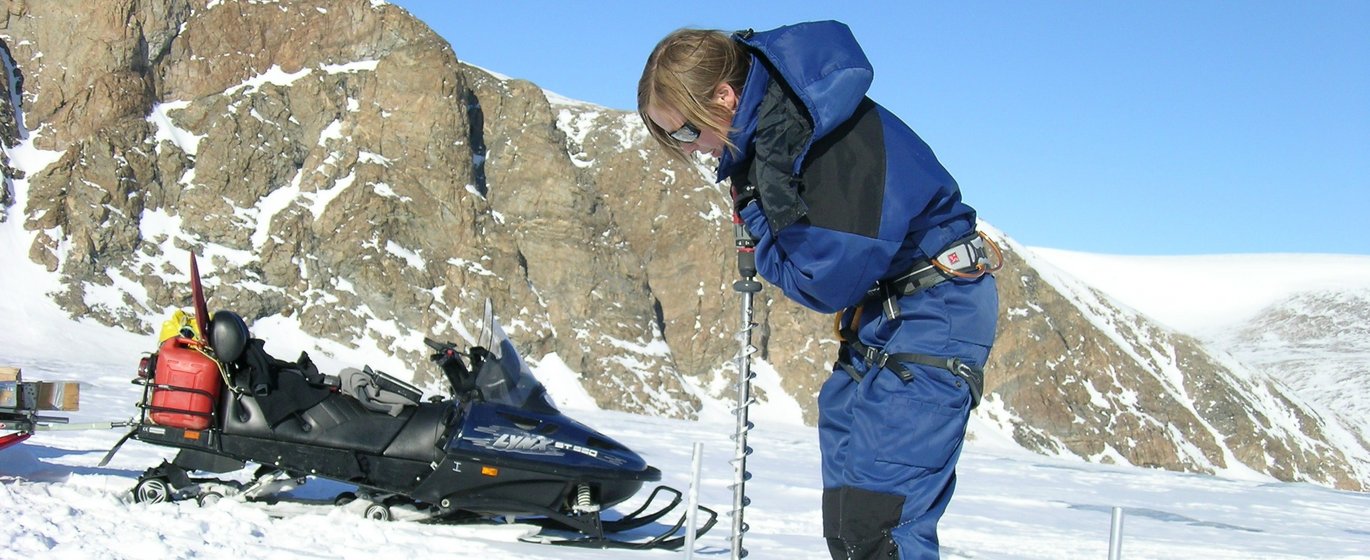GEM Scientist of the Month - December
This month we hope to lighten up your day with the last 2020 GEM Scientist of the Month - Signe Hillerup Larsen from GEUS. The GEM programme are happy to welcome Signe as the new GlacioBasis manager in Zackenberg. Here she shares her love for the A.P. Olsen ice cap, and how she is involved in making arctic research more accessible to children.

In 2020 Signe started working for the GEM GlacioBasis programme in Zackenberg which she will also be leading from next year on. She is working with the mass balance of glaciers and how their meltwater contributes to rivers. At Zackenberg a number of automatic weather stations, especially at the local ice cap, A. P. Olsen Ice cap, are part of the long-term monitoring.
In her teenage years Signe was fascinated by the early Danish Greenland expeditions - in particular by Mylius Erichsen, who was from her hometown Ringkøbing. In 2009 and 2010, Signe made the decision to assist in setting up and maintaining weather stations on the ice cap at the Northeast Greenland coast. A few years later, her master’s thesis work was based on the data from these stations. She kept keen interest in GEM during her PhD, despite diving into different glaciological topics. Working as a scientist, the challenge is to stay updated on new methods and constantly improving own methods. Technology advanced greatly in her research field, such as the latest Sentinel satellites from ESA, which supply frequent imagery of the Earth surface. In combination with our in-situ observations, Signe sees the potential for these data to upscale the point measurements performed in the field.
The extraordinary fieldwork at Zackenberg kept on fascinating her. Despite the challenge to be away from her kids for several weeks, the fieldwork is also Signe’s favourite reward as a scientist.
"It’s the remoteness in itself as well as the beautiful nature to be seen, e.g. on a 35 km snow scooter trip from Zackenberg research station to the ice cap. The opportunity to be involved in consistent ecosystem monitoring. The glaciological in-situ observations at Zackenberg are rewarding on a professional level, especially since the observations of this kind are so unique. There is a high sense of purpose to the job".
Now that her children are old enough, Signe is diving into field plans again, including plans to update her glacier safety and crevasse rescue course in Iceland next spring. Later in summer, she will assist her colleagues at the Geological Survey of Denmark and Greenland (GEUS), servicing weather stations on the Greenland Ice Sheet.
In the light of reaching out with her research passion for the glaciers, Signe has also been involved in creating teaching material for Danish schools (POLARSKOLEN.dk and junior-geologerne.dk) in the last couple of years. These two initiatives are involving teachers in the process of making the materials, to ensure that the material will actively get used in the schools. Both teaching sites are set up in a way that the material can be updated continuously which is essential for science where the latest findings often are what children find most fascinating. For Signe this way of outreach is highly efficient by making children interested in the changing nature around them.